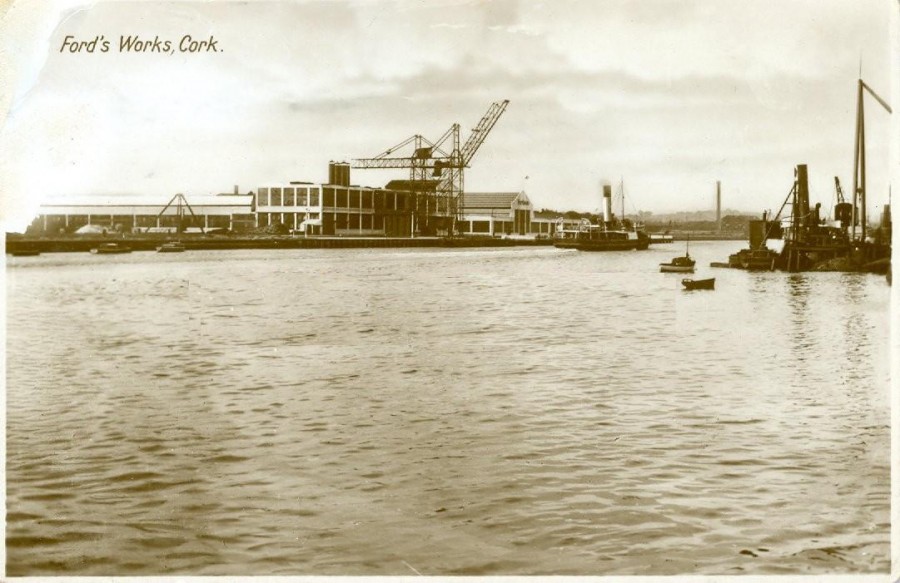Kieran’s Our City, Our Town Article,
Cork Independent, 22 September 2016
Discover Cork: Schools’ Heritage Project 2016-17
This year coincides with the fourteenth year of the Discover Cork: Schools’ Heritage Project. Again launched for the new school term, the Project is open to schools in Cork; at primary level to the pupils of fourth, fifth and sixth class and at post-primary from first to sixth years. There are two sub categories within the post primary section, Junior Certificate and Leaving Certificate. A student may enter as an individual or as part of a group or a part of a class entry.
Co-ordinated by myself, one of the key aims of the project is to encourage students to explore, investigate and debate their local heritage (built, archaeological, cultural and natural) in a constructive, active and fun way. Projects on any aspect of Cork’s rich heritage can be submitted to an adjudication panel. Prizes are awarded for best projects and certificates are given to each participant. A cross-section of projects submitted from the last school season can be gleamed from this link on my website, www.corkheritage.ie where there are other resources, former titles and winners and entry information as well.
Students produce a project on their local area using primary and secondary sources. Projects must also meet five elements. Projects must be colourful, creative, have personal opinion, imagination and gain publicity before submission. These elements form the basis of a student friendly narrative analysis approach where the student explores their project topic in an interactive and task oriented way. In particular students are encouraged to attain material through visiting local libraries, engaging with fieldwork, interviews with local people, making models, photographing, cartoon creating, making DVDs of their area. Re-enacting can also be a feature of several projects. For over thirteen years, the project has evolved in how students actually pursue local history. The project attempts to provide the student with a hands-on and interactive activity that is all about learning not only about heritage in your local area (in all its forms) but also about the process of learning by participating students.
This school term there is a focus on the Ford Motor Company with projects on the old factory being encouraged. One hundred years ago, engineering was important in Cork Harbour quay wall works, Cork’s electric lighting and power supply, and Railway facilities. There was a considerable amount of citizens who worked in foundries, mill-wrighting, jobbing and in general repair work. The possibilities for engineering on a scale appropriate to the extensive waterfront and river transport were to be increased by the arrival to Cork in 1917 of the firm, Messrs. Henry Ford & Son, Inc. of Dearborn, Michigan.
Henry Ford’s grandfather John in his early years was a native of Wolfe Tone Street in Cork City. In later life, he moved with his family to become tenants on an estate at Ballinascarty, near Bandon. John had three brothers, Samuel, Henry and George who emigrated to America in search of fortune in the 1830s. The Ford Motor Company was incorporated in June 1903 with Henry Ford (III) as vice-president and chief engineer. Henry realized his dream of producing an automobile that was reasonably priced, reliable, and efficient with the introduction of the Model T in 1908. From 1908 until 1927, the company would sell more than 15 million Model T cars and trucks in the US and Europe. The company began construction of the world’s largest industrial complex along the banks of the Rouge River in Dearborn, Michigan, during the late 1910s and early 1920s.
In November 1916, Fords made an offer to purchase the freehold of the Cork Park race grounds and considerable land adjoining the river near the Marina. Fords, Cork Corporation and the Harbour Commissioners entered into formal negotiations. The Ford Company acquired approximately 130 acres of land, having a river frontage of approximately 1,700 feet, the company agreeing to erect the buildings to cost at least £200,000 to give employment to at least 2,000 adult males, and to pay a minimum wage of one shilling per hour to them when employed in the factory after completion. The plant being laid down by the company was specially designed for the manufacture of an Agricultural Motor Tractor, well known as the “fordson”, a 22 horse power, four cylinder tractor, working with kerosene or paraffin, adaptable either for ploughing or as a portable engine arranged for driving machinery by belt drive. There is a great project for a student to pursue on some of the stories of Fords.
The Discover Cork: Schools’ Heritage Project is about thinking about, understanding, appreciating and making relevant in today’s society the role of our heritage such as Fords. The project is open to many directions of delivery. Students are encouraged to engage with their topic -in order to make sense of it, understand and work with it. Students continue to experiment with the overall design and plan of their work. This project in the City is kindly funded by Cork City Council (viz the help of Niamh Twomey), the Heritage Council and Cork Civic Trust (viz the help of John X. Miller). Prizes are also provided by the Lifetime Lab, Lee Road and Sean Kelly of Lucky Meadows Equestrian Centre, Watergrasshill (www.seankellyhorse.com). There is also a County Cork edition.
Captions:

